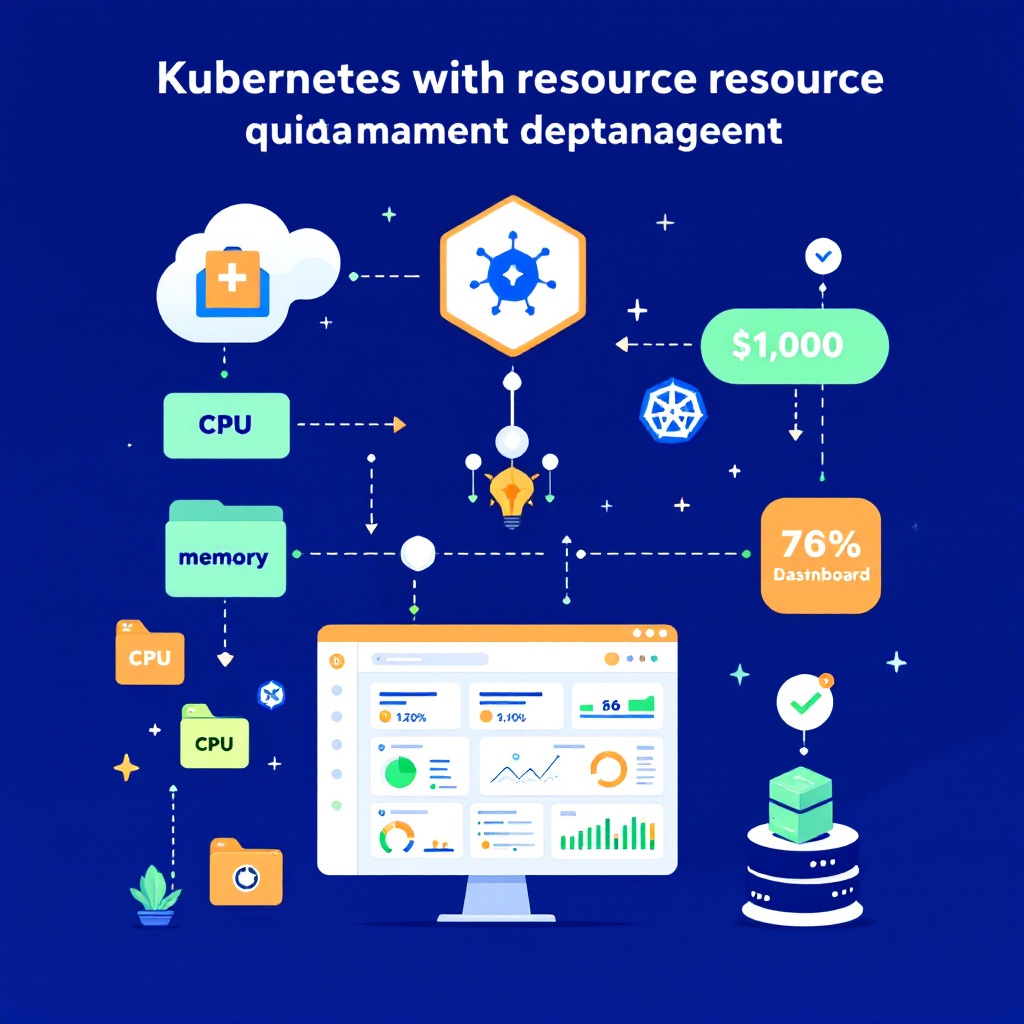Kubernetes has emerged as the leading platform for managing containerized applications. As organizations scale their deployments, the need for effective resource management becomes paramount. Resource quotas are a vital feature in Kubernetes, allowing administrators to limit resource consumption across namespaces, thereby optimizing resource allocation and preventing resource contention.
Understanding Resource Quotas
Resource quotas are a way to manage how much of a particular resource (like CPU, memory, or storage) a namespace can consume. They help ensure that no single team or application can monopolize the cluster’s resources. This is especially important in multi-tenant environments where different teams or applications may compete for the same resources.
Why Use Resource Quotas?
Using resource quotas provides several benefits, including:
- Preventing Resource Contention: By limiting the resources available to each namespace, you can prevent one application from consuming all resources, which could lead to performance degradation for other applications.
- Optimizing Resource Allocation: Resource quotas help administrators to allocate resources more efficiently, ensuring that all applications have access to the resources they need.
- Facilitating Cost Management: By keeping track of resource usage, organizations can better understand their costs and manage budgets effectively.
Step-by-Step Guide to Implement Resource Quotas
Now that we understand the importance of resource quotas, let’s dive into how to implement them in your Kubernetes environment.
Step 1: Define Resource Quota
The first step is to define a resource quota. This is done by creating a YAML file that specifies the limits for CPU, memory, and other resources. Here’s an example of a resource quota definition:
apiVersion: v1
kind: ResourceQuota
metadata:
name: my-resource-quota
namespace: my-namespace
spec:
hard:
requests.cpu: "2"
requests.memory: "4Gi"
limits.cpu: "4"
limits.memory: "8Gi"
In this example, the namespace `my-namespace` is limited to 2 CPU cores and 4 GiB of memory for requests, and 4 CPU cores and 8 GiB of memory for limits.
Step 2: Apply the Resource Quota
Once you have defined the resource quota, the next step is to apply it to your Kubernetes cluster. You can do this using the kubectl command:
kubectl apply -f resource-quota.yamlThis command creates the resource quota in the specified namespace. You can verify that it has been created successfully by running:
kubectl get resourcequota -n my-namespaceStep 3: Monitor Resource Usage
After applying the resource quota, it’s essential to monitor resource usage within the namespace. You can check the current usage with the following command:
kubectl describe resourcequota my-resource-quota -n my-namespaceThis command provides details about the current usage versus the limits defined in the resource quota.
Step 4: Adjust Resource Quotas as Needed
As your applications evolve, you may need to adjust the resource quotas. This can be done by modifying the YAML file and reapplying it:
kubectl apply -f updated-resource-quota.yamlIt’s crucial to continuously evaluate the resource consumption and adjust the quotas accordingly to meet the demands of your applications.
Common Pitfalls to Avoid
While implementing resource quotas can greatly enhance resource management, there are some common pitfalls to watch out for:
- Overly Restrictive Quotas: Setting quotas too low can lead to resource shortages and application failures. Make sure to analyze your application’s resource needs before defining quotas.
- Lack of Monitoring: Failing to monitor resource usage can lead to unexpected issues. Regularly check resource usage to ensure that quotas are appropriate.
- Ignoring Namespace Limits: Resource quotas are set at the namespace level. Ensure that you are applying them to all relevant namespaces to prevent resource contention.
Conclusion
Implementing resource quotas in Kubernetes is a powerful way to manage resource allocation efficiently. By following this step-by-step guide, you can ensure that your applications have the resources they need while preventing any single application from dominating the cluster. As you continue to grow and evolve your Kubernetes environment, remember to regularly review and adjust your resource quotas to meet the changing demands of your applications.
